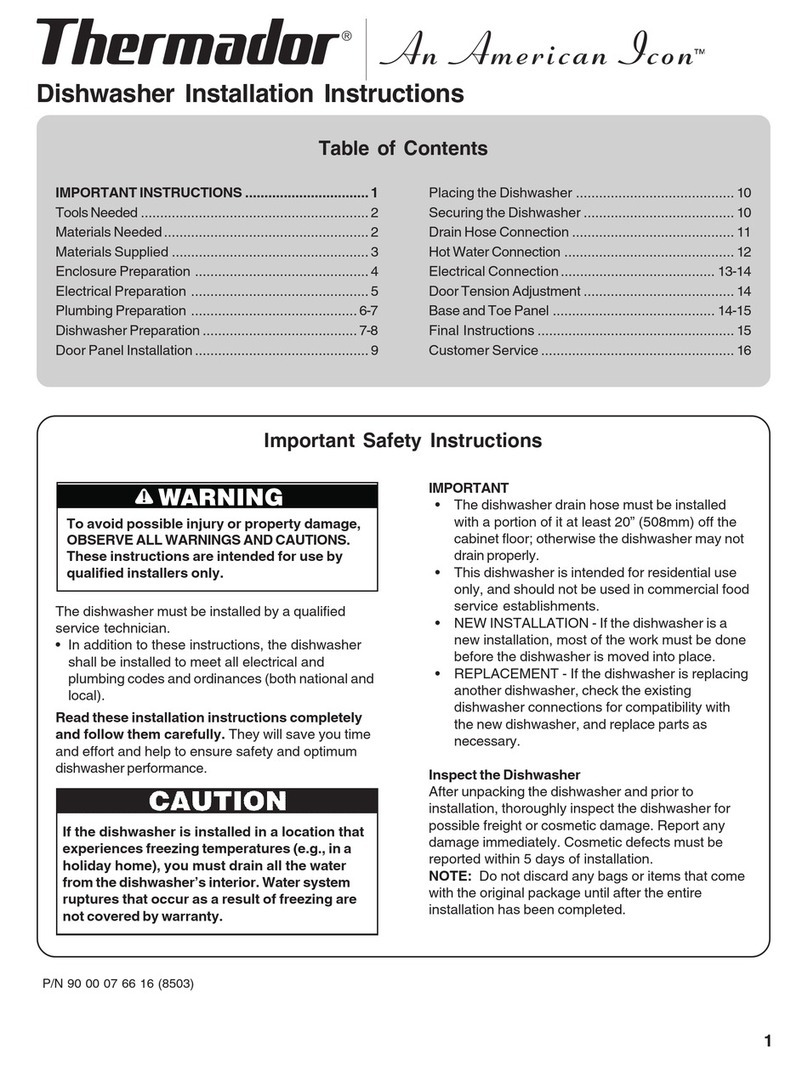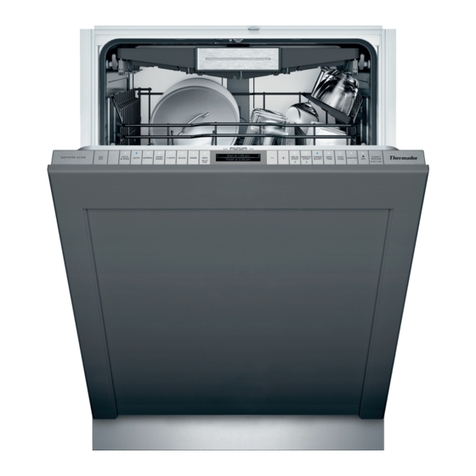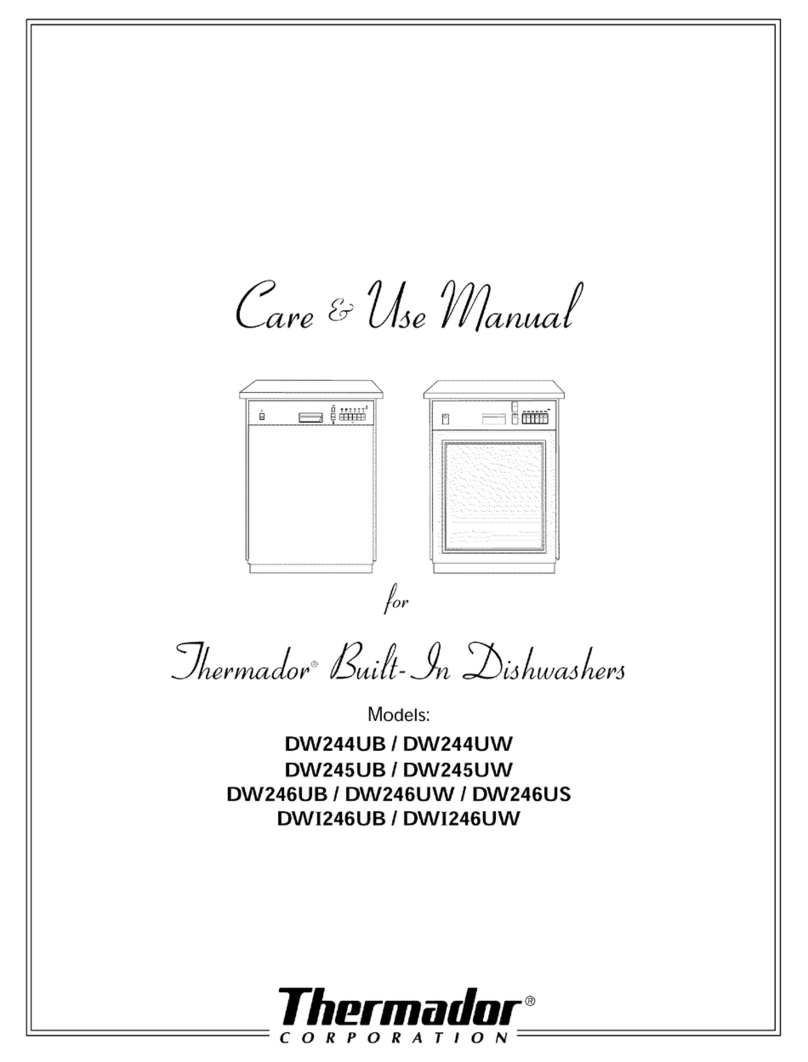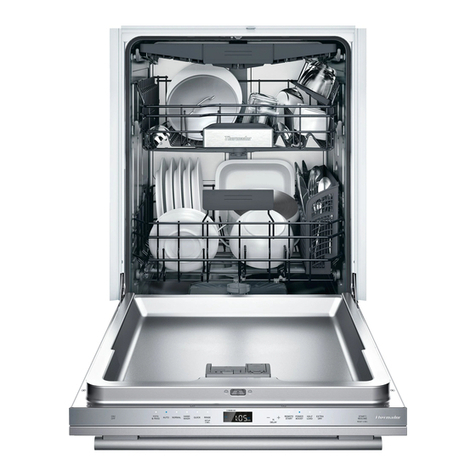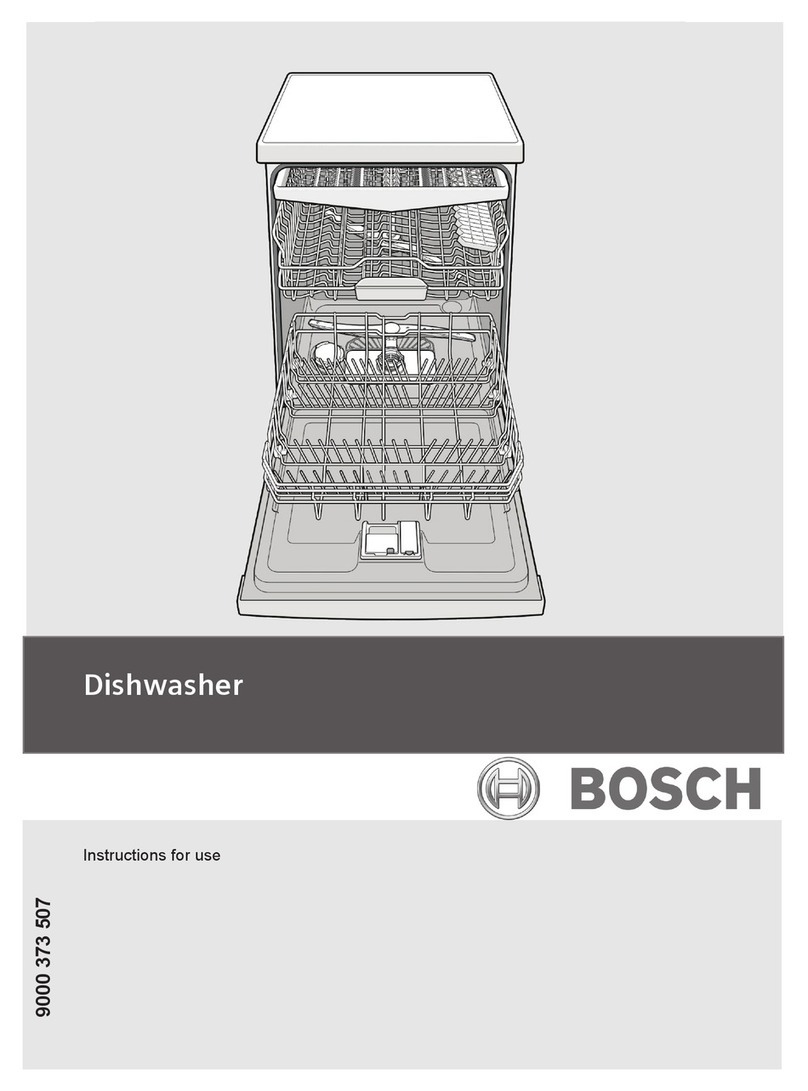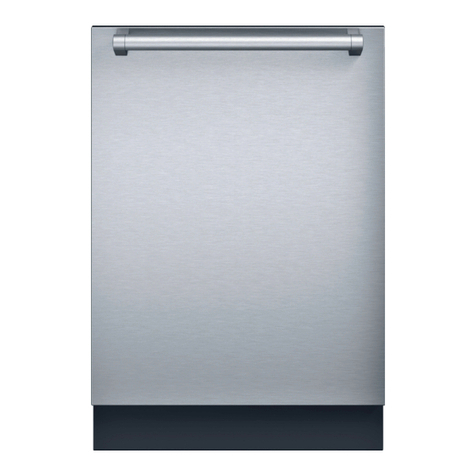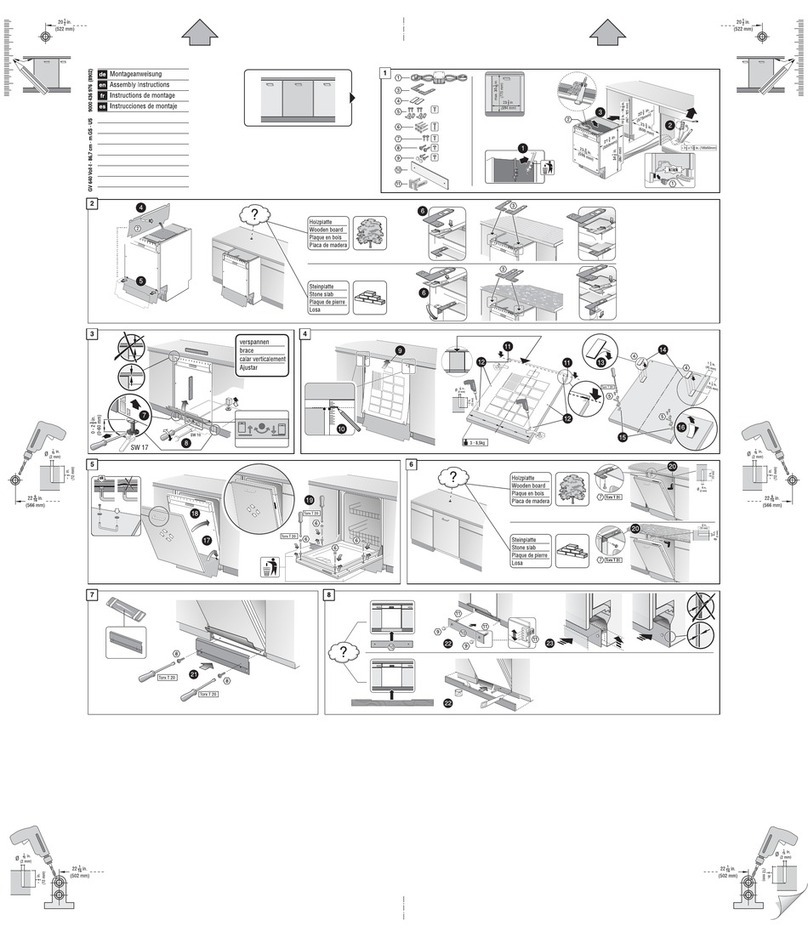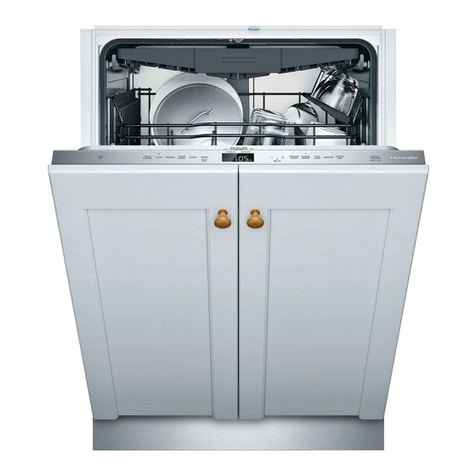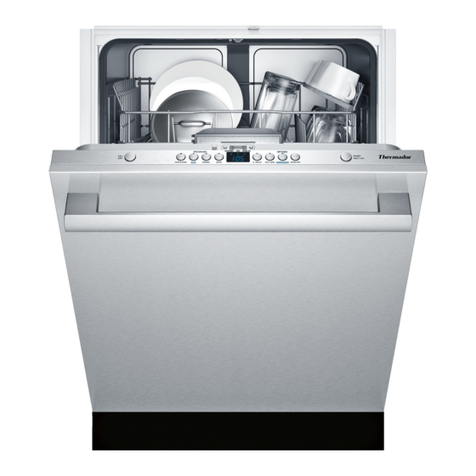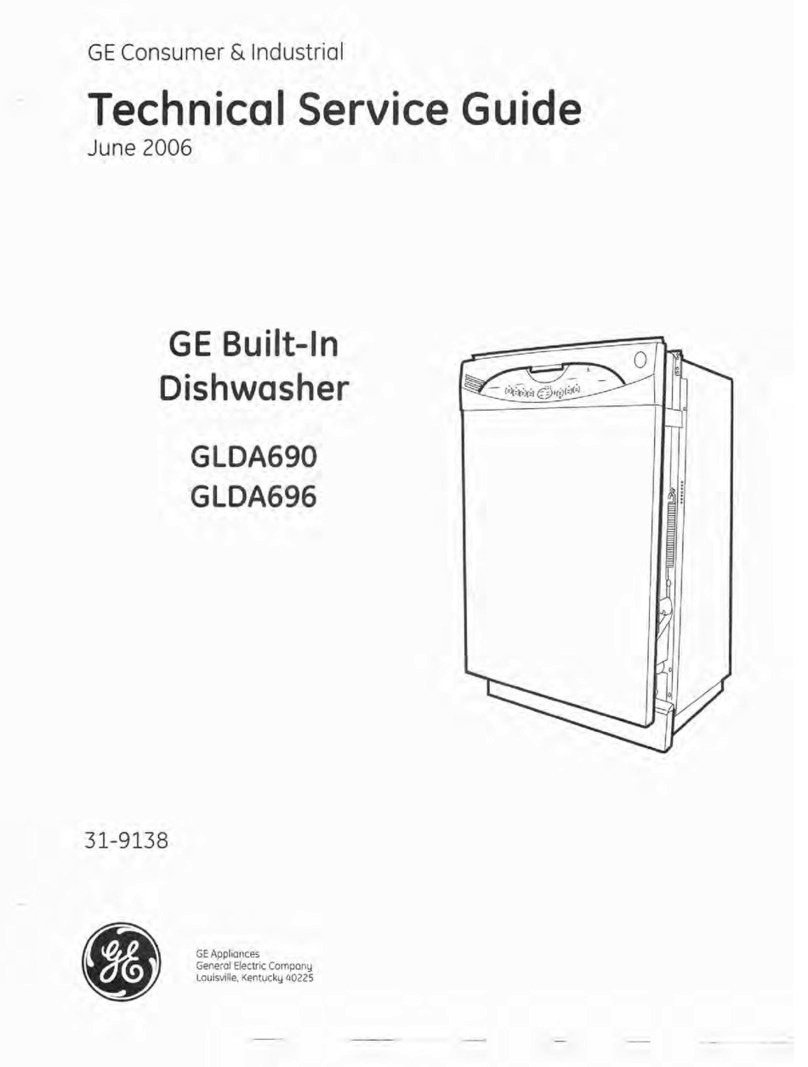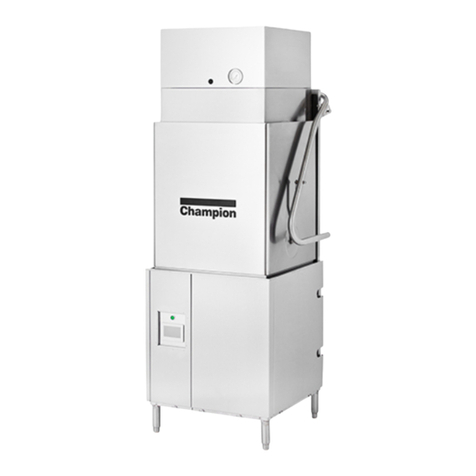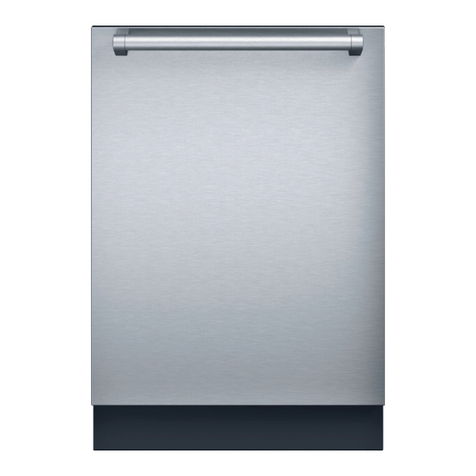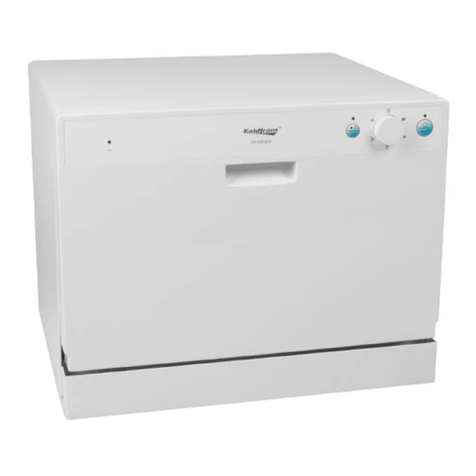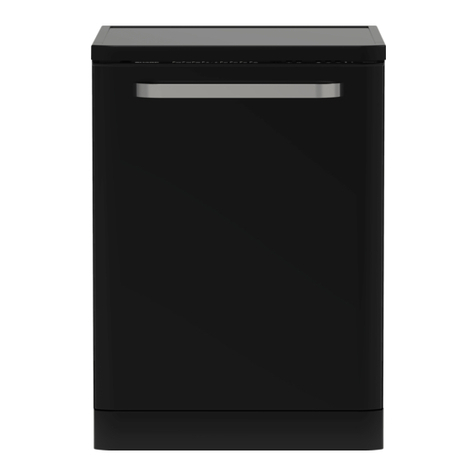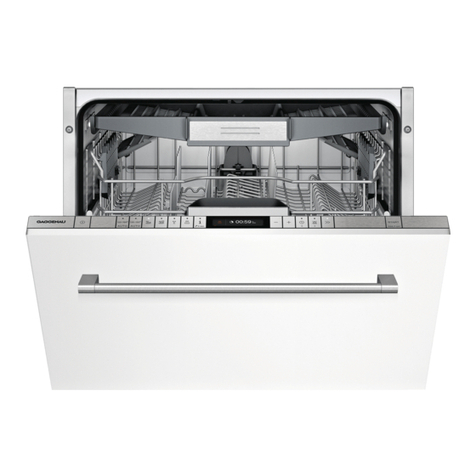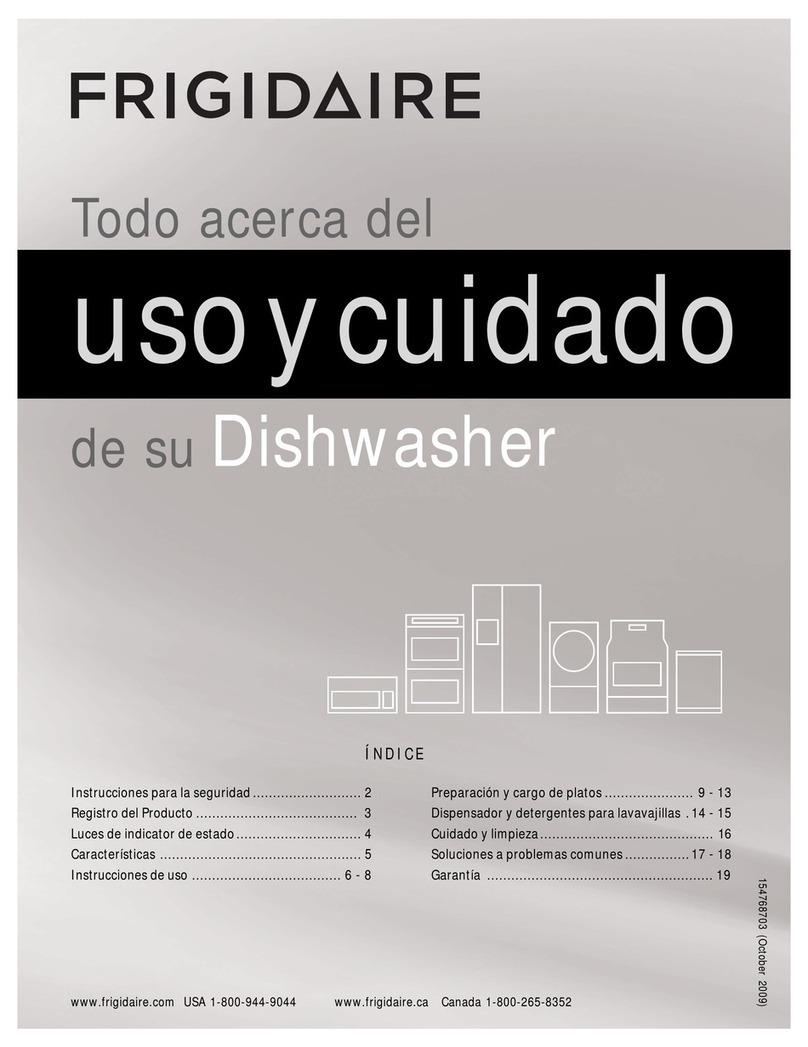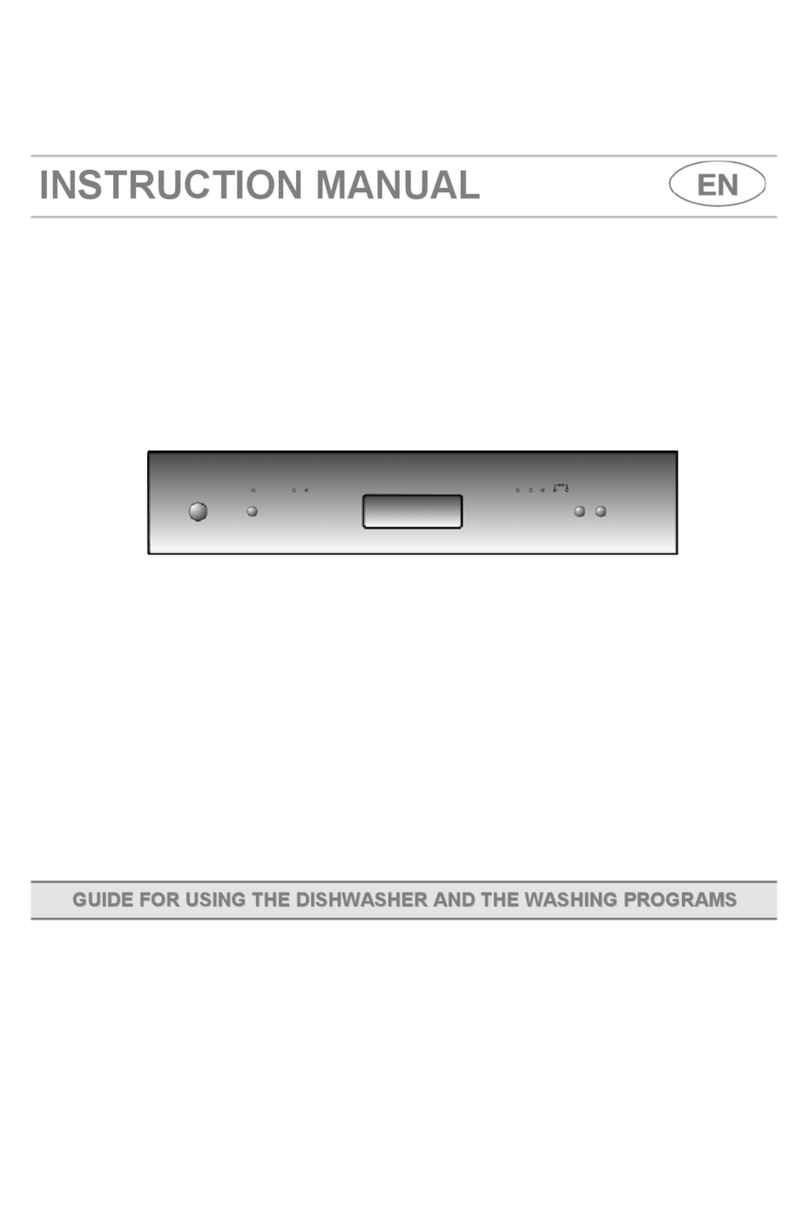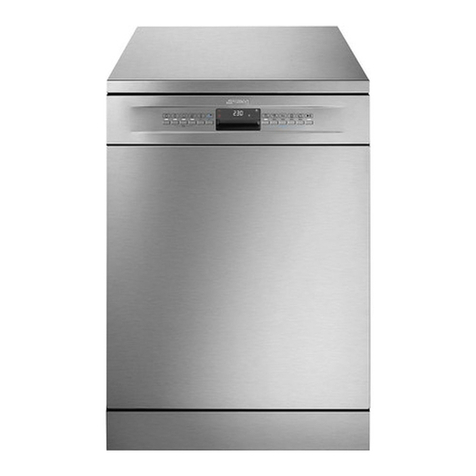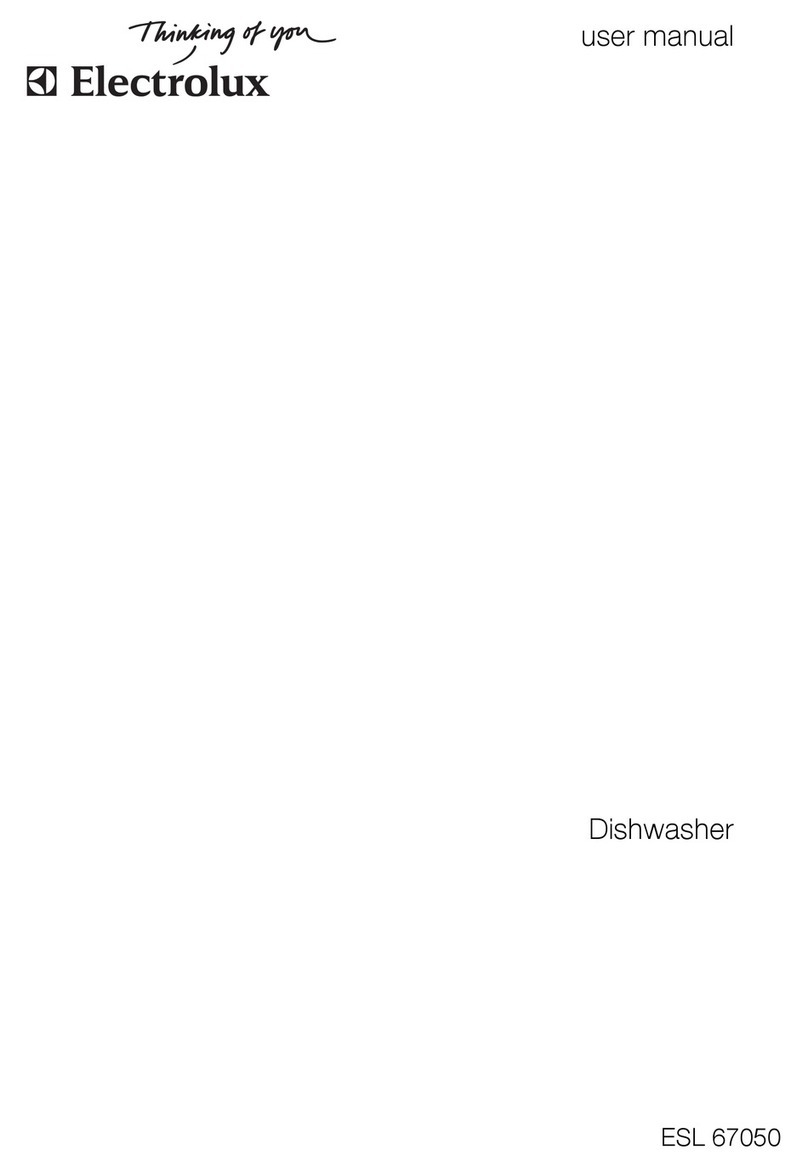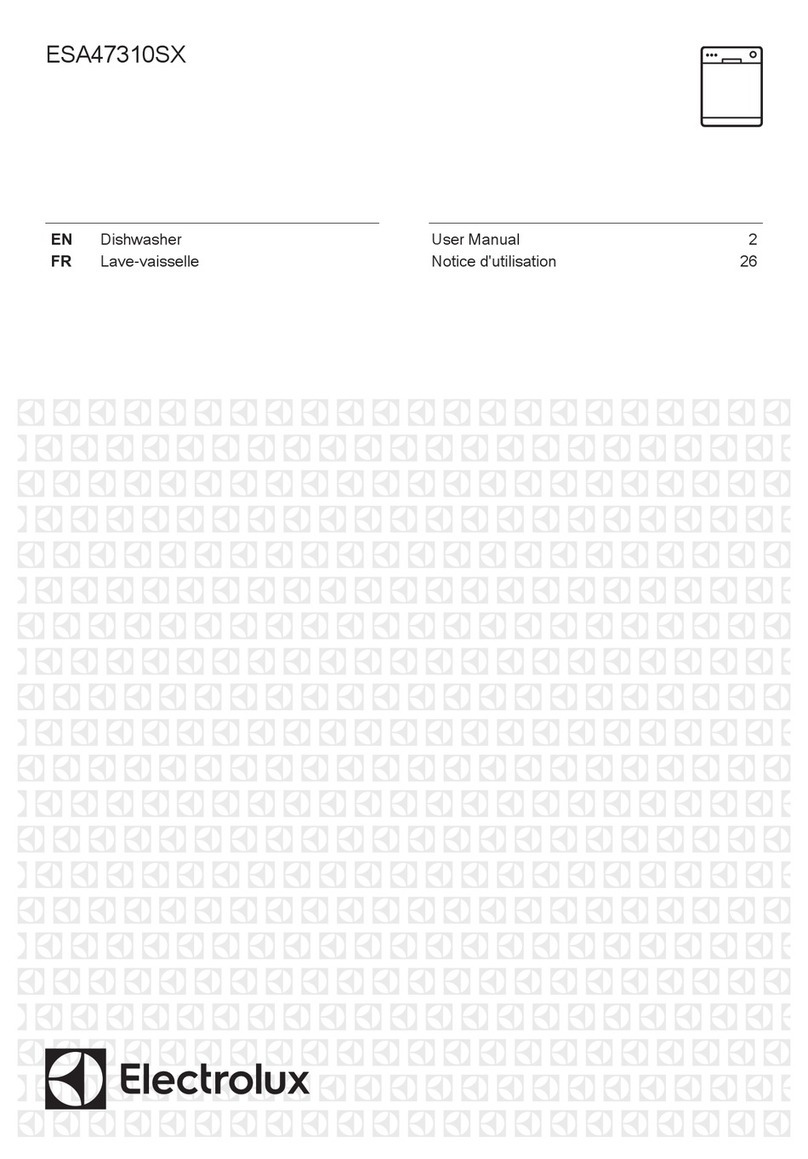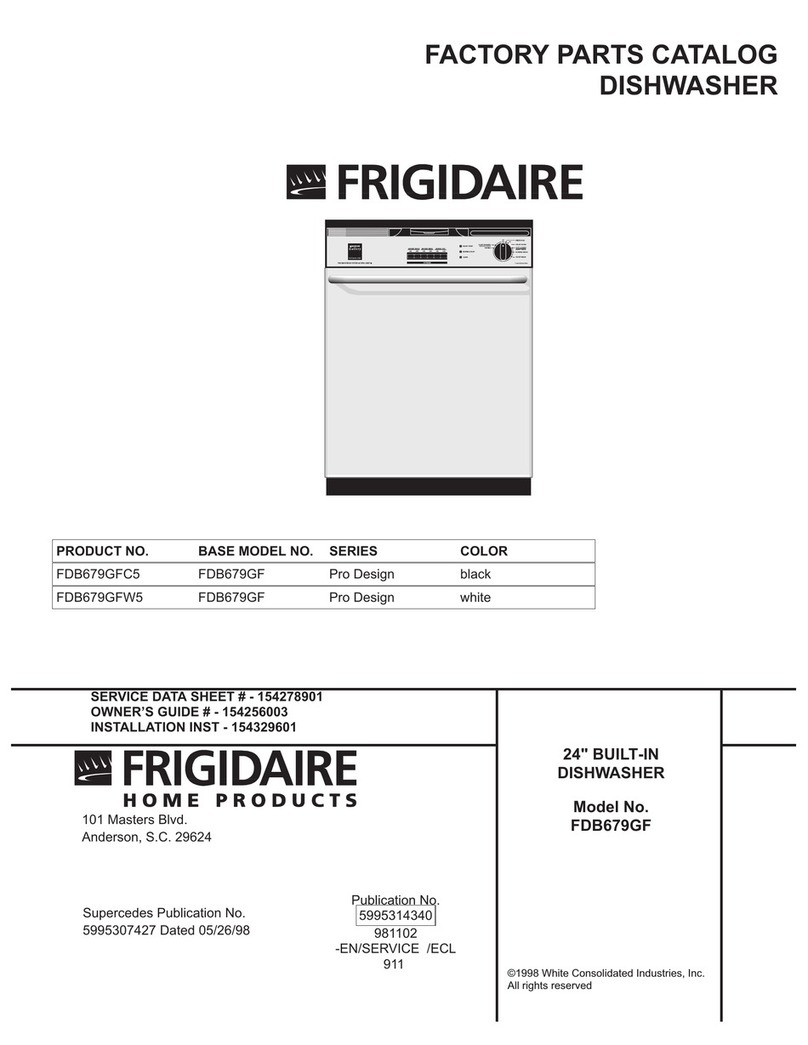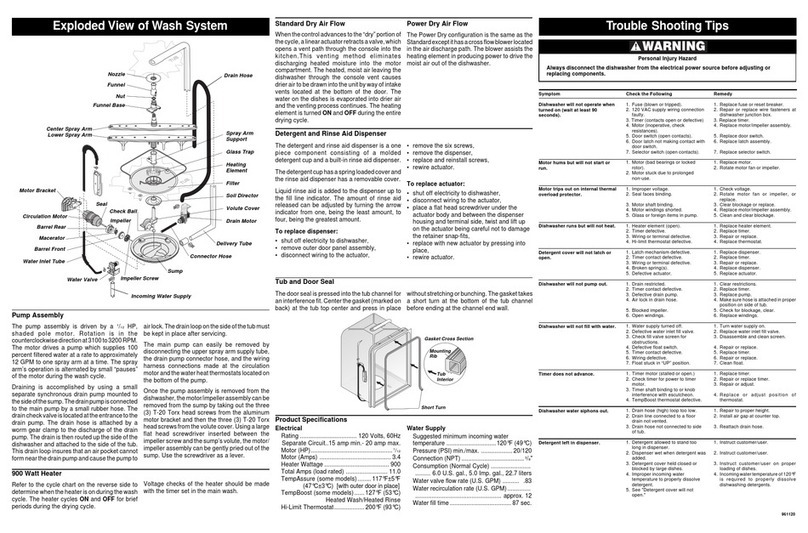mimportant Safety instructions
Misuse of the dishwasher can result
in serious injury or death. Do not use the
dishwasher in any way not covered in this
manual or for any purpose other than those
explained on the following pages.
Severe product damage and/or injury could
result from the use of unqualified service
technicians or non=original replacement
parts. All repairs must be performed by a
qualified service technician using only
original equipment factory replacement
parts.
Never use steam cleaning product to clean
your dishwasher. The manufacturer will not
be liable for possible damages or
consequences.
Never use harsh chemicals to clean your
dishwasher. Some chloride=containing
cleaning products can damage your
dishwasher and may present health hazardst
Use this dishwasher only for its intended
function, which is the washing of household
dishware and kitchenware.
This dishwasher is provided with a manual set
which includes Installation instructions and
Use and Care Manual. Read and understand
all instructions before using the dishwasher.
Use only detergents or wetting agents
recommended for use in a dishwasher, and
keep them out of the reach of childen.
When loading items to be washed:
Locate sharp items so that they are
not likely to damage the door seal.
Load knives and other sharp utensils
with their HANDLES UP to reduce the
risk of cut-type injuries.
•Do not wash plastic items unless they are
marked "dishwasher safe" or the equivalent.
For plastic items not so marked, check the
manufacturer's recommendations.
Do not operate your dishwasher unless all
enclosure panels are in place.
Do not tamper with or override controls and
interlocks.
Do not abuse, sit on, or stand on the door or
dish racks of the dishwasher.
To reduce the risk of injury, do not allow
children to play in or on the dishwasher.
Under certain conditions, hydrogen gas may
be produced in a hot water system that has
not been used for two weeks or more.
Hydrogen gas is explosive. Before using a
dishwasher that is connected to a hot water
system that has been unused for two weeks
or longer, turn on all hot water faucets and let
the water flow from each for several minutes.
This will release any accumulated hydrogen
gas. As the gas is explosive, do not smoke or
use an open flame during this time.
Remove the door to the washing
compartment when removing an old
dishwasher from service or discarding.
To avoid floor damage and possible mold
growth, do not allow wet areas to remain
around or under the dishwasher.
• Protect your dishwasher from the elements.
Protect against freezing to avoid possible
damage to the fill valve. Damage caused by
freezing is not covered by the warranty.
Electrical shock or fire could result if the
electrical supply for the dishwasher
covered in this manual is incorrectly
installed or if the dishwasher has been
improperly grounded. Do not use the
dishwasher covered in this manual if you
are not certain the electrical supply has
been correctly installed or the dishwasher
has been properly grounded.
GROUNDING INSTRUCTIONS
This appliance must be grounded to a metal,
permanent wiring system, or an equipment
grounding conductor must be run with the circuit
conductors and connected to the equipment
grounding terminal or lead on the dishwasher.
See the Installation instructions included with
this dishwasher for more information on electrical
requirements.
SAVE THESE INSTRUCTIONS!





















